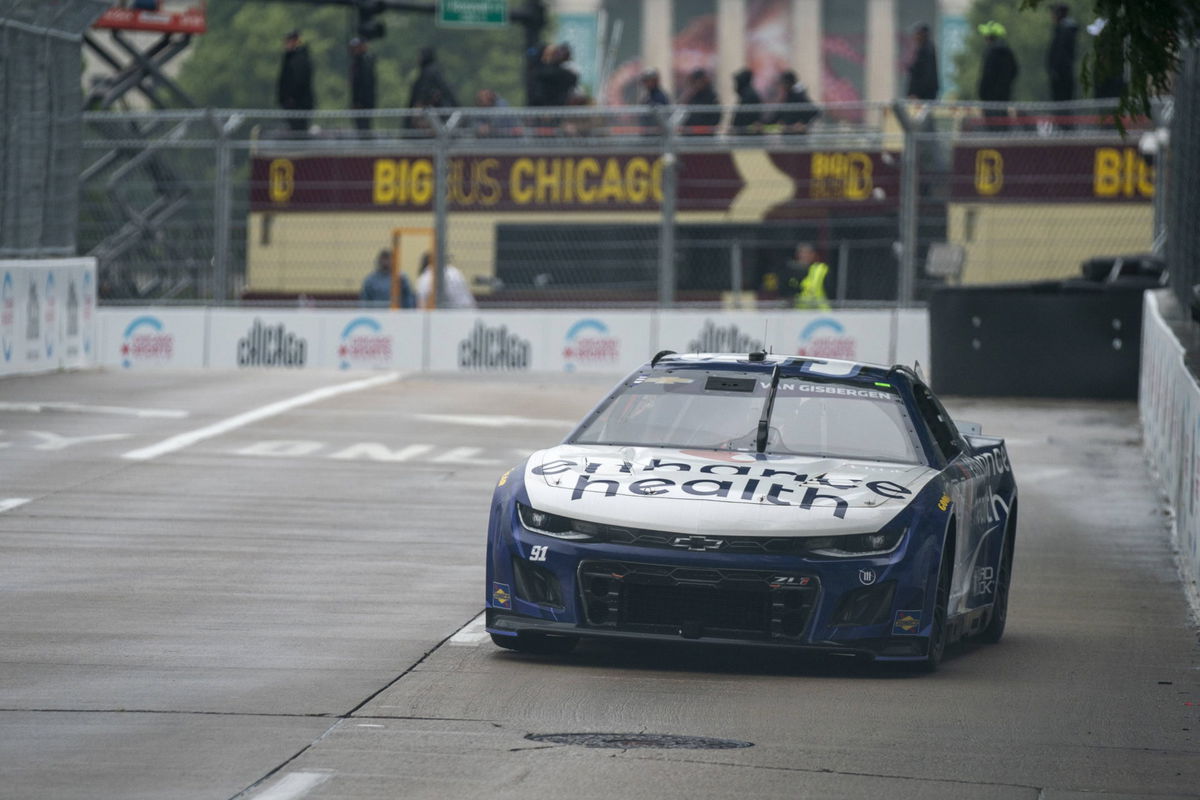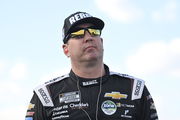
Imago
July 2, 2023, Chicago, Illinois, USA: NASCAR, Motorsport, USA Cup Driver, Shane van Gisbergen races for position through the city streets for the Inaugural Grant Park 220 on the Chicago Street Course. Chicago USA – ZUMAries 20230702_mda_a161_233 Copyright: xLoganxTxArcex

Imago
July 2, 2023, Chicago, Illinois, USA: NASCAR, Motorsport, USA Cup Driver, Shane van Gisbergen races for position through the city streets for the Inaugural Grant Park 220 on the Chicago Street Course. Chicago USA – ZUMAries 20230702_mda_a161_233 Copyright: xLoganxTxArcex
Cody Ware’s battered Ford sat wedged in the Turn 6 tire barrier, its nose crumpled and the driver motionless for a tense half-minute. The Chicago Street Course, a venue already infamous for its tight corners and unforgiving tracks, had just witnessed what NASCAR’s Mike Forde would later call “the biggest frontal hit we’ve seen in the Next Gen era“. Ware’s radio crackled with, “I need help,” while the field roared by at full speed, and the caution flag remained inexplicably absent.
Watch What’s Trending Now!
This wasn’t an act in isolation but against the backdrop of increased scrutiny on NASCAR’s practices for safety and decision-making. Earlier in the race, Josh Berry was left stranded in the middle of the track in Turn 7 for nearly 2 laps without a caution being called. This even allowed some drivers to pass him and make a strategic pit stop, as they knew a caution was imminent.
For drivers, teams, and fans, the race in Chicago was a case study in how quickly a routine scene can slip into chaos and how the split-second decisions made by the series’ race control can be the difference between relief and catastrophe.
ADVERTISEMENT
NASCAR’s explanations
There was no silence on NASCAR’s side. It was instead replete with explanations, technical justifications. Meanwhile, fans had the sinking realization that the sport’s overseers were running to keep up with the demands of modern street racing. But for anyone who saw the crash of Ware and the slow response, the question still lingered: Why did it take so long for NASCAR to act?
After the checkered flag fell, NASCAR officials faced a barrage of questions about the delay in throwing the caution for Ware’s crash. Mike Forde, NASCAR’s managing director of racing communications, offered a series of rationales on the Hauler Talk podcast, confirming the severity of the impact but emphasizing procedural limitations. “That was a big, big hit,” Forde said. “By the time we saw that 51 [Cody Ware] in the tire barriers, we did not see the hit. If we did see that hit, that caution would have been immediately thrown, there’s no question about that. But all we saw at that moment in time was the car in the barrier”.
ADVERTISEMENT
Forde explained that track corner workers are explicitly instructed not to editorialize when reporting incidents over the radio. In Ware’s case, the message to race control was simply “Turn 6,” with no indication of the crash’s violence. This protocol, intended to prevent confusion, left race officials without the critical context needed to assess the urgency.
Camera placement also played a pivotal role. NASCAR had two fixed Hawkeye cameras in Turn 6, but Ware’s accident occurred in a blind spot, leaving officials without real-time footage of the impact. Forde acknowledged, “If we return to Chicago, we will focus on adding more cameras in different positions to expand the coverage area for officiating.”
ADVERTISEMENT
NASCAR’s Mike Forde confirmed on today’s Hauler Talk that Cody Ware’s hit at Chicago was, indeed, the “biggest frontal hit we’ve seen in the Next Gen era.” Didn’t hear a specific amount of Gs.
Interestingly, @mforde mentioned that track corner workers are instructed not to… https://t.co/vgjR3K3VIA
— Steven Taranto (@STaranto92) July 9, 2025
The limitations of the current system were further exposed when comparing Ware’s crash to Kyle Larson’s similar incident the previous year, which drew a quicker caution since the broadcast was already focused on Larson’s car. NASCAR’s off-site race control, still in its beta phase, was cited as another area for improvement. Forde noted that increased staffing and more robust monitoring could help prevent similar delays in the future. “Eventually, that’ll be more built out and have more human beings staffed to catch things like what happened late in the race at Chicago,” he said.
Brad Moran, the Cup Series managing director, echoed these points, admitting, “Unfortunately, we didn’t have the actual footage of the impact of the car getting into the tire barrier,” Moran said. “That’s something that we’re going to take back. We’re going to look at whether we go back to Chicago. We’ll be looking at certain areas of that racetrack and definitely improving that situation.” The repeated refrain is: the system failed not out of negligence, but out of technical and procedural gaps. However, the industry is not on board with this lapse.
ADVERTISEMENT
Top Stories
‘NASCAR on Sale’: Team Owners Interested to Buy Out France Family With $5B Price Tag

Kyle Busch Hits Rock Bottom as Snowball Derby Nightmare Sparks Wave of Fan Sympathy

NASCAR Driver Left Helpless for 2026 as Chevy Drops the Axe on Daytona Winning Star

Kyle Larson Reveals Rick Hendrick’s Pet Peeve While Roasting His On-Track Blunders

Snowball Derby Rocked by Conspiracy Theories as NASCAR Driver Forced to Abandon Race

Drivers and industry voices demand accountability
While NASCAR’s leadership cataloged their explanations, the paddock’s reaction was far less forgiving. Cody Ware himself, reflecting on the crash, told Frontstretch, “Especially given the speed of how fast we were going into the barrier, obviously, I’m not going anywhere. There’s not much I can do at that point. But obviously, at that point, I’m just focused on getting out of the car and getting to a safe spot”. Ware’s calm after the incident belied the frustration felt by many drivers who saw the delay as emblematic of deeper issues.
Veteran driver Denny Hamlin was among the first to publicly denounce NASCAR’s handling of the situation, calling the delay “egregious” and warning that such lapses erode trust in the sanctioning body’s commitment to safety. Hamlin said on his Actions Detrimental podcast, “No question about it. That was a massive hit, you have got to throw the caution immediately.”
ADVERTISEMENT
The concerns extended beyond Chicago. Kevin Harvick, who has been outspoken about the dangers of the Next Gen car, remarked after Kurt Buach’s career derailing crash at Pocono in 2022, “These cars don’t crash like the other cars crash. They’re violent impacts, and they feel a lot different than what the crash data g-load is. It goes straight through the driver’s body”. While Next-Gen safety has markedly improved since 2022, the chorus of drivers demanding more proactive safety measures has only grown louder as incidents accumulate.
The parade of technical reasons, camera blind spots, radio protocols, and beta-phase control rooms rings hollow when measured against the visceral reality of a driver stranded in a wrecked car, waiting for help. As the sport looks ahead to future street races, the pressure is mounting for NASCAR to match its words with decisive action, ensuring that safety is not just a talking point but a lived reality for everyone on the track. What do you think of NASCAR’s reasoning? Let us know in the comments!
ADVERTISEMENT
ADVERTISEMENT
ADVERTISEMENT
ADVERTISEMENT

